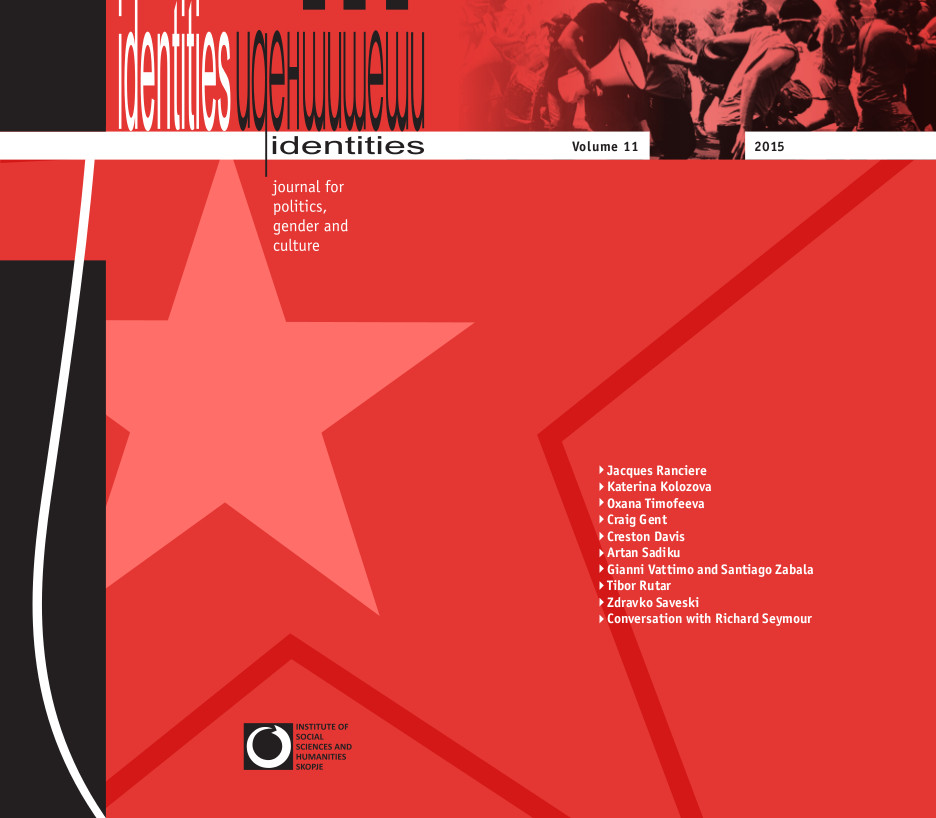Andrey Kovalev: Russian Actionism, 1990-2000 (2007–) [RU, EN]
Filed under book | Tags: · 1990s, action art, art, art criticism, contemporary art, happening, performance, performance art, politics, russia

A survey of 450 performances, actions and happenings held in Moscow, St. Petersburg, Yekaterinburg and elsewhere. Descriptions and photo documentation are accompanied by press coverage and testimonies of participants and witnesses.
A ten-page English summary published in Artchronika magazine is introduced as follows:
“The phrase “performance in the 1990s” immediately evokes several images: Oleg Kulik slaughtering a pig at Regina Gallery; Anatoly Osmolovsky sitting on the shoulder of the Mayakovsky monument; Oleg Kulik again, this time attacking passers-by like a rabid dog; Alexander Brener masturbating on the diving board at the Moscow swimming pool or calling out Boris Yeltsin to fight on Red Square; the barricade erected on Nikitskaya Ulitsa; members of the Radek group on top of Lenin’s mausoleum; the crucifixion of Oleg Mavromatti; and so on. These stories have become pure myth, retold with breathy excitement and longing for glory days lost to the past, or cited in various criminal court cases.”
Special issue of WAM (World Art Музей), 28-29, Moscow, 2007.
ISSN 1726-3050
416 pages
English excerpts
Published in Artchronika, Spring-Summer 2008, pp 108-117
Российский акционизм. 1990-2000 (Russian, 2007, 21 MB)
Gestures of an Era, or the Era of Gestures (English, 2008)
Major Waldemar Fydrych: Lives of the Orange Men: A Biographical History of the Polish Orange Alternative Movement (2014)
Filed under book | Tags: · 1980s, activism, communism, dissent, happening, humour, poland, politics, protest, revolution, social movements

“In Communist Poland, Surrealism Paints You!!!
Between 1981 and 1989 in Wroclaw Poland, in an atmosphere in which dissent was forbidden and martial law a reality, the art-activist Orange Alternative movement developed and deployed their “socialist sur-realism” in absurd street-painting and large-scale performances comprising tens of thousands of people dressed as dwarves, in an effort to destabilize the Communist government. It worked. Beginning with the ‘dialectical painting’ of dwarves onto the patches of white paint all over the city’s walls, which uncannily marked the censorship of opposition slogans, the group moved on to both stage happenings and over-enthusiastically embrace official Soviet festivals in a way that transformed both of these into mass expressions of dissent. They illegally restaged the mass spectacle of the storming of the Winter Palace on the anniversary of the October Revolution using their own homemade tanks; organized patriotic gatherings in which anyone waving red flags or wearing red (or eating red borscht, or covering oneself in ketchup) was arrested; and inspired other Orange Alternative groups to appear across the country. Although the group existed to the left of the mainstream opposition of Solidarity, their art was a key, acknowledged factor in the overthrow of the Communist government.
Lives of the Orange Men tells the story of the movement’s main protagonists, and is the first stand-alone English-language account of the Orange Alternative, written autobiographically by is central figure, and featuring an appendix of newly translated key texts including Major’s “Manifesto of Socialist Surrealism,” a timeline of every Orange Alternative happening, and a new foreword from the Yes Men.”
Foreword by the Yes Men
Edited by Gavin Grindon
Translated by David French
Publisher Minor Compositions, 2014
Open Access
ISBN 9781570272691
328 pages
Review: Stewart Home (ArtReview, 2014).
See also other publications about the Orange Alternative
Comment (0)Identities, Journal for Politics, Gender and Culture, 11: The Future of the Idea of the Left (2015)
Filed under journal | Tags: · capitalism, community, democracy, economy, left, marxism, metaphysics, philosophy, politics, theory

Identities “is a peer reviewed international journal that seeks to serve as a platform for the theoretical production of Southeastern Europe and enable its visibility and an opening for international debate with authors from both the ‘intellectual centers’ and the ‘intellectual margins’ of the world. It is particularly interested in promoting theoretical investigations which see issues of politic, gender and culture as inextricably interrelated.”
With contributions by Jacques Rancière, Katerina Kolozova, Oxana Timofeeva, Craig Gent, Creston Davis, Artan Sadiku, Gianni Vattimo and Santiago Zabala, Tibor Rutar, Zdravko Saveski, and Richard Seymour.
Edited by Katerina Kolozova and Žarko Trajanovski
Publisher Institute of Social Sciences and Humanities, Skopje, 2015
Open Access
ISSN 1857-8616
129 pages

